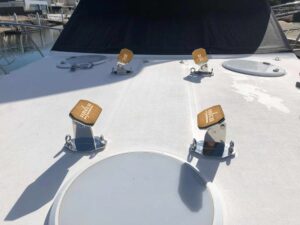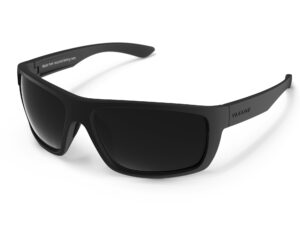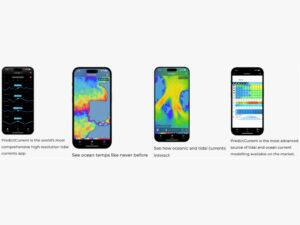
1. Use webbing loops at the head and tack of a spinnaker for top-down furling. This allows for a proper tight furl with no metal rings or grommets cutting the sail, straps or furling cable.
— Bruce Cooper, Ullman Sails
2. Furled sails should be lowered and stowed in strong winds to prevent the sail from accidentally unwinding itself.
— Patrick Murray, North Sails
3. If it’s windy, be sure to depower the sail before you start furling. Steer deep enough to blanket the chute behind the mainsail, and ease the sheets as you furl.
— Judy Blumhorst, Hyde Sails
4. Self-steering equipment needs to be able to handle the size and power of the sails, the boat speed, and changes in apparent-wind speed and angle as the boat surfs (or doesn’t). Make sure the helmsman is experienced when sailing with a spinnaker or reacher, or choose a sail that your autopilot or windvane can handle.
— Joe Cooper, Hood Sails
5. Add 4- to 6-foot soft Spectra rope extensions to the clew, then tie the spinnaker sheets to them. When furling the sail, overfurl so the Spectra wraps around the sail and closes the last part of the spinnaker. The Spectra rope extensions become sail ties to keep the sail closed after the sheets are eased and the sail is lowered to the deck to store.
— Bruce Cooper, Ullman Sails
6. When flying a spinnaker, know what upper wind range is comfortable for the boat, crew and systems. After the boat is at hull speed, keeping more sail up only becomes a liability.
— Bruce Cooper, Ullman Sails
7. The faster your boat goes, the farther forward your apparent-wind angle becomes. For example, on a catamaran, even when the true-wind angle looks like a broad reach (the lower limit of a reacher-style sail), the actual apparent wind could have you sailing on a close reach, putting you back in the sweet spot for a code zero. Alternately, a heavy-displacement boat will have lower apparent-wind angles and may be a better candidate for a more traditional downwind spinnaker.
— Judy Blumhorst, Hyde Sails








